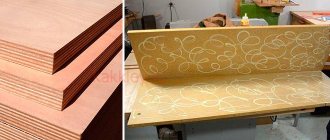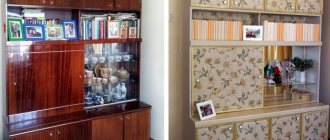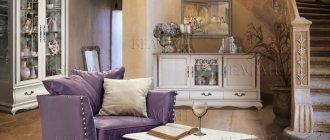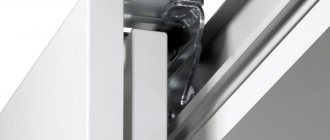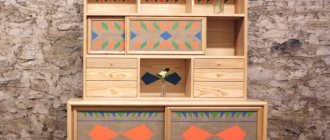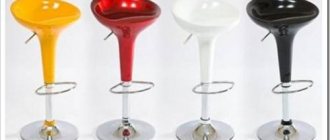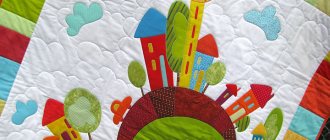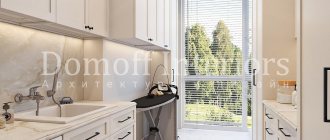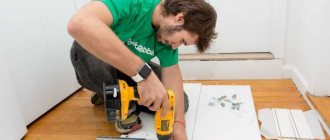How to bend wood
If you decide to decorate the room with wood or start creating beautiful furniture in a classic style, then you will need to make curved parts. Fortunately, wood is a unique substance because it allows an experienced craftsman to play with the form a little. It's not as difficult as it seems, but not as easy as we would like.
Previously, the site already had a publication on bending plywood. In this article we will understand the principles of bending solid boards and timber, and find out how this is done in production. We will also provide useful tips from professionals that will be useful to the home craftsman.
General provisions
What is wood laminated board? This is a collection of thin sheets of wood and veneers glued together with a special composition. The most commonly used tree species are birch, alder, beech or pine.
This structural feature gives this material the following advantages:
- Increased moisture resistance. Compared to ordinary wood, the hydrophobicity of this material is approximately two times lower. This allows its use in rooms with high humidity and even for finishing external facades.
Advice: for outdoor use, it is recommended to use special plywood with increased moisture resistance of the FSF brand. The phenol-formaldehyde resin used for gluing veneers is much more resistant to dampness and temperature changes.
To make bent legs, I cut strips 35 mm wide from 4 mm
plywood. A standard sheet measuring 1530 x 1530 mm was cut into three parts 510 mm wide with a hand-held electric saw and each was cut into strips on a sawing machine. You can get 39 strips from one sheet of plywood. For each leg I took five strips. It's funny: the thickness of the legs turned out to be 17 mm, not 20, as expected. That is, the actual thickness of the plywood was 3.5 mm.
Article on the topic: Beautiful furniture with your own hands
Why bending is better than sawing
A curved wooden part can be obtained by two methods: by bending a flat piece, or by cutting out the required spatial shape. The so-called “sawing” method attracts users with its simplicity. For such production of parts and structures, you do not need to use complex devices, you do not have to spend a lot of time and effort. However, in order to cut a curved wooden product, you have to use a workpiece that is obviously too large, and a lot of valuable material will be irretrievably lost as waste.
But the main problem is the performance characteristics of the resulting parts. When cutting a curved part from ordinary edged lumber, the wood fibers do not change their direction. As a result, transverse cuts fall into the radius zone, which not only worsen the appearance, but also significantly complicate the subsequent finishing of the product, for example, its milling or fine grinding. In addition, in the rounded areas that are most vulnerable to mechanical stress, the fibers run across the section, which makes the part prone to fracture in this place.
Whereas when bending, the opposite picture is usually observed, when the wood only becomes stronger. The edges of the curved beams or boards do not have “end” cuts of fibers, so subsequently such workpieces can be processed without restrictions, using all standard operations.
Bending wood fibers
Application of pallets
To make some chairs, there is no need to look for drawings or practice wood processing. It is enough to take wooden products as a basis, which almost no one pays attention to. One of them is a pallet, or pallet, a rigid wooden container for transporting goods. A chair made from pallets will really look unusual and creative. Another advantage of using this product is the high quality and strength of the wood from which it is made.
Article on the topic: Do-it-yourself furniture shelving
The pallets are dismantled and all the nails are taken out. The elements of the future chair must be sanded, and then the tray must be assembled in the reverse order.
The seat of the chair is formed by stacking pallets on top of each other to the desired height (usually 2 pieces are enough). The backrest also serves as a pallet, fixed perpendicular to the seat. By sawing the pallet crosswise into 2 parts, you can use it as armrests.
Before assembly, the parts are varnished in several layers. To ensure that the back and seat are not hard and look really chic, foam pillows in some unusual covers are placed on them.
What happens in wood when it bends?
Bending technology is based on the ability of wood, while maintaining its integrity, to change its shape within certain limits as force is applied, and then retain it after the mechanical impact is removed. However, we all know that without preparatory measures, lumber is elastic - that is, it returns to its original state. And if the applied forces are too great, then the beam or board simply breaks.
Layers of a wooden workpiece do not work equally when bent. Outside the radius, the material is stretched, inside it is compressed, and in the middle of the array, the fibers experience virtually no significant loads and have little resistance to the forces acting on the workpiece (this inner layer is called “neutral”). With critical deformation, the fibers at the outer radius break, and at the inner radius, “folds” usually form, which are a fairly common defect when bending soft wood. Fibers of plastic hardwood or softwood can shrink by 20 percent or more, while the tensile limit is about one to one and a half percent.
That is, to determine the possibility of bending (without destruction), a more important indicator will be the limit of the relative elongation of the stretched layer. It directly depends on the thickness of the part and determines the radius that needs to be obtained. The thicker the workpiece and the smaller the radius, the greater will be the relative elongation along the fibers. Having data on the physical properties of popular wood species, it is possible for each of them to formulate the maximum possible ratio of thickness and radius of parts. In numbers it will look like this:
Bending using steel bar
| Breed | Possible (internal) bending radius in relation to the thickness of the part after steaming and application of the tire. |
| Pine | 1:11 |
| Spruce | 1:10 |
| Birch | 1:5,7 |
| Oak | 1:4 |
| Beech | 1:2,5 |
Bending without using a tire
| Type of lumber preparation | Possible (internal) bending radius in relation to the thickness of the part. |
| Heating only | 1:80 – 1:100 |
| Moisturizing only | 1:50 – 1:60 |
| Heating and humidification | 1:20 – 1:30 |
These data indicate that softwood lumber, in comparison with dense hardwoods, is less suitable for free bending. To work with lumber at aggressive radii, it is necessary to use combined methods of preliminary preparation of parts and mechanical protection.
Tire as an effective way to avoid wood destruction during bending
Since the main problem is fiber breakage on the outer radius side, it is this surface of the workpiece that needs to be stabilized somehow. One of the most common methods is to use an overhead splint. The tire is a steel strip with a thickness of half a millimeter to two millimeters, which covers the beam or board along the outer radius and bends on the template along with the wood. The elastic strip absorbs part of the energy when stretched and at the same time redistributes the destructive load along the length of the workpiece. Thanks to this approach, coupled with humidification and heating, the permissible bending radius is reduced significantly.
In parallel with the use of steel bars in bending devices and machines, mechanical compaction of wood is achieved. This is done using a pressing roller, which presses on the workpiece along the outer bending radius. In addition, the template form in such a device is often equipped with 3 mm teeth (in increments of about 0.5 cm), oriented towards the movement of the workpiece.
The purpose of the jagged surface of the template is to prevent the workpiece from slipping, to prevent mutual displacement of fibers in the wooden massif, and also to create a small depressed corrugation in the concave radius of the part (the fibers are pressed inside the massif, therefore, problems with folds are solved).
Bending pattern with tire
Pressing with a tire allows you to bend bars and boards made of coniferous and soft deciduous wood with a minimum percentage of defects. Please note that parts made of relatively hard wood when bent with pressing become approximately ten to twelve percent thinner, and pine and spruce blanks become 20-30% thinner. But the positive aspects of this method include a significant increase in the strength characteristics of the finished product, as well as a significant reduction in the requirements for the presence of flaws and defects in wood blanks.
What materials are used to make furniture?
First of all, let's look at the materials of homemade structures. Wood does not necessarily have a high cost. You can order high-quality wooden furniture at comfortable prices in many stores. You can choose your own furniture options from furniture panels. Such material can be of two types:
- solid type shields are made from a piece of wood, which is processed in a certain way;
- The compressed material is obtained by pressing thin shields. This results in particularly strong plates.
Making furniture from wood requires a special approach. In this case, it is important to choose the right wood. In this case, all species are divided into hard and soft wood. Hard types include apple, ash, beech, acacia and elm. They are used for the manufacture of frame structures and furniture designed for significant loads.
Soft species are juniper, pine, willow, fir. Decorative parts that are not used for increased loads are made from this raw material.
You can construct unusual objects from solid wood
When constructing solid wood furniture with your own hands, it is necessary to take into account special operating conditions. For example, for rooms with high levels of humidity, wood with good moisture resistance is suitable. It could be cedar.
Article on the topic: DIY curtains for a children's room
Unique products are made from wenge, meranti, mahogany and makore; such materials have a non-standard texture.
Wood makes massive household items
Masters often use the following varieties:
- pine is used for the frame of upholstered furniture and for decorative elements;
Robust design
- oak is suitable for the production of massive pieces of furniture such as chests of drawers, beds or cabinets;
Birch decor
Making furniture with your own hands from improvised materials is also popular. Pallets, logs or bars are in demand for work. An important point is the preparation of a suitable tool. You will need an electric jigsaw, a screwdriver and a drill.
You can build furniture with your own hands from chipboard. This is a budget material for simple products.
How wooden furniture is made: production processes
Before you get started, it’s worth finding out how wood furniture is made. A complete process includes the following departments: raw material warehouse, workshop, assembly room, painting workshop, drying room and finished product warehouse.
Special equipment is used in production. Edge banding machines are used to apply edges. For linear planing of parts, jointing machines are required. Craftsmen use thicknesser machines for various milling operations. Milling machines are suitable for working with flat elements. Grinding equipment is used to grind and calibrate workpieces.
Furniture making workshop
How to improve the plasticity of wood
In normal condition, lumber has elasticity, significant spatial rigidity and resistance to compression. Wood receives these valuable properties from lignin, a natural “network” polymer that gives plants a stable shape and strength. Lignin is located in the intercellular space and in cell walls, connecting cellulose fibers. Coniferous wood contains about 23-38 percent of it, and deciduous wood contains up to 25 percent.
Essentially, lignin is a kind of glue. We can soften it and turn it into a “colloidal solution” if we heat the lumber by steaming, boiling, or treating with high-frequency current (a household microwave is also suitable for small parts). After the lignin has melted, the workpiece is bent and fixed - as it cools, the molten lignin hardens and prevents the wood from returning to its original shape.
Practice shows that the optimal temperature for bending solid wood (block, strip, board) is 100 degrees Celsius. This temperature must be obtained not on the surface, but inside the workpiece. Therefore, the time of temperature exposure will largely depend on how massive the part is. The thicker the part, the longer it will have to be heated. For example, if you use steaming to prepare for bending a 25 mm thick rail (with a humidity of about 28-32%), then on average it takes about 60 minutes. It is noteworthy that the steam exposure time for parts of similar dimensions for any species is approximately the same.
By the way, it is believed that it is also impossible to overheat the part, since lignin after hardening may lose its elasticity and become too brittle.
The boiling method is not often used, since the workpiece is heavily and unevenly moistened, and such water-saturated fibers and cells can tear when bent, at least with the formation of lint. After cooking, the parts have to dry for too long. But this method works well if you need to process only part of the workpiece for bending.
Steaming allows the workpiece to be heated evenly, and its output humidity tends to approach the optimum. The most suitable humidity for achieving maximum ductility of lumber is considered to be in the range of 26-35 percent (the moment of saturation of wood fibers).
To steam wood for bending at home, use homemade cylindrical chambers made of metal/polymer pipes or rectangular wooden boxes. The source of steam is heated tanks, electric kettles and other similar devices that can provide a temperature of about 105 degrees and low pressure. This is always followed by the stage of drying the part (+ holding the fixed shape) to about fifteen percent and finishing it.
Steam generator from a kettle
Steam generator made of polymer pipe
Fixing and drying the workpiece
Varieties of cuisine
However, the above project is a kind of ideal. In practice, this effect can only be achieved by calculating and ordering custom-made furniture according to individual sizes. In fact, radius kitchens represent a compromise between the desired and the possible.
- A modular kitchen with rounded corners is the most affordable option , where only the outer cabinets and shelves have smooth outlines. Despite its simplicity, the technique is very effective: the kitchen set immediately looks more ergonomic, and takes up the same amount of space as furniture with conventional doors.
- The option with alternating radius and flat facades is a more common solution: it looks much more interesting and takes up only a slightly larger area.
- Model with curved facades - all doors are curved and form a smooth wavy surface. This solution is more effective in corner and U-shaped kitchens, where the set itself is located in an arc, forming a sector of a circle. This is where you can choose convex and concave modules to create the most comfortable workplace. The calculation is complicated, but completely worth it.
This type of set takes up a lot of space. In small kitchens, this solution is difficult to implement, although there are exceptions.
Chemical methods for plasticizing wood
It is also known that it is possible to make lumber more pliable using impregnation with various compounds. There are ready-made impregnations that make wood cells more plastic, for example, “Super-Soft 2”. Some practitioners soak wood in so-called textile conditioners, obtaining a similar result.
But quite primitive “recipes” can also be used containing ammonia and ethyl alcohol, glycerin, alkalis, hydrogen peroxide, dissolved alum... Many of them act extremely simply - they increase the ability of the workpiece to absorb water and help retain moisture in the fibers.
Thin products such as veneer are processed by spraying, but preparatory chemical impregnation of normal lumber is usually carried out using the full immersion method. It takes time for the working substances to get inside the bar or slats, usually from 3-5 hours to several days (although heating helps reduce the wait).
Largely because of the length of the processes, chemical plasticization is not often used, although there are other problems: the cost of chemicals, changes in colors, the need to provide protection from harmful fumes, the increased tendency of such curved parts to straighten...
Chemical plasticizers for wood
Tips for bending lumber using hydrothermal preparation
- Select the quality of the blanks for bending very carefully. It is better not to use material with cracks, knots (even live and fused ones), or sloping fibers. If there are no options for this, then orient the part in the bending device (machine or template) so that the defects fall into the concave radius zone, and not into the tension zone at the outer radius. Give preference to the splint bending method.
- When selecting a workpiece, it is necessary to provide for a change in the size of the part after molding. For example, the thickness of a coniferous beam can be reduced by 30 percent if bending with pressing is performed.
- Even if you plan on extensive finishing, don't leave too much material. The thinner the workpiece, the easier it bends without breaking.
- If the amount of work is small, then it is better not to cut out the workpieces, but to prick them from lumps. This way it is possible to avoid cutting the fibers and, as a result, defects during bending.
- For bending, it is advisable to use lumber with natural moisture. If you use dry preparations, then preference should be given to those that were not processed in a drying chamber, but were dried under a canopy - in an atmospheric way.
- After steaming, work with softened wood very quickly, as lignin begins to harden almost immediately, especially in the most vulnerable outer layers of solid wood. Usually you need to focus on a time reserve of half an hour to 40 minutes, so there is no point in making large cameras if you simply do not have time to install all the material from them into templates.
- Place the material in the steaming chamber so that the surfaces facing the outer radius are freely exposed to the steam jets.
- To save time, many carpenters refuse to use templates with clamps. Instead, they use metal brackets and wedges or stop posts on the templates.
- Keep in mind that a curved bar or rail will still tend to straighten. And this straightening always occurs by a few percent. Therefore, when high precision in the manufacture of a part is required, it is necessary to conduct tests and, based on the results obtained, adjust the shape of the template (reduce the radius).
- After the part has cooled in the mold, let it stand some more. Some experienced furniture makers prefer to cure for 5-7 days. The tire, as a rule, is left attached to the part during this entire time.
Bending a wooden blank according to a template
Using wood bending tools
Required Tools
The manufacture of various products requires special equipment and tools. To create the frame of a house or garage, and to make a chair, you need to have different equipment and tools.
If desired, the furniture can be given aesthetics by complicating the frame design and applying decorative finishing.
To make furniture, it is necessary to consider the basic operations that will have to be performed during the work process.
Pipes with a square cross-section are easily assembled into the desired structure.
Cutting the workpieces must be done with a circular saw, popularly called a “grinder” or a hand saw. When precise work is required, it is better to prefer a hand saw or an electric jigsaw.
To connect parts you need a welding machine, but if you don’t have one or don’t have the skills to use it, then you need an electric drill with a set of drills for metal and wood.
The main thing is to get a drawing, a grinder and a drill with bolts or a welding machine, and the rest, as they say, is a matter of technique.
To clean parts you need a flat file, for large parts a metal disc for a grinder and an emery disc for wood. Both discs are inexpensive and are always available at hardware stores. You need sandpaper for small jobs, a hammer, a tape measure, a chisel, a screwdriver, or preferably an electric screwdriver with a set of attachments.
Tools for working with profile pipes.
To make furniture from profile pipes, equipment is required to bend the pipes. Making such equipment is not difficult, but it requires time and careful execution.
The equipment is manufactured for the production of intended pipe bends.
Equipment may be changed and supplemented during the work process. Therefore, the main requirements for equipment are simplicity, ease of manufacture, modification and addition.
